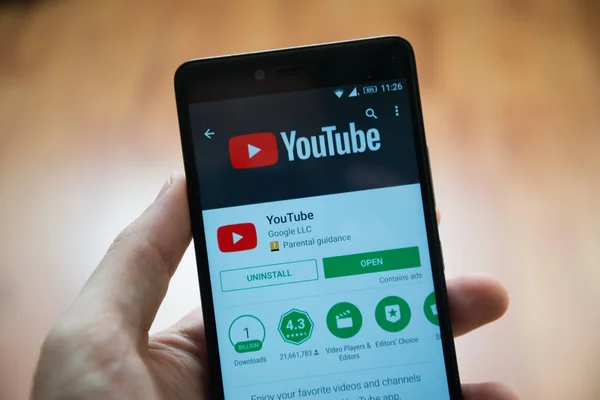
Introduction: The Digital Marketing Revolution
In the fast-paced world of modern business, digital marketing has emerged as a powerhouse strategy for reaching and engaging with target audiences. With the proliferation of digital channels and technologies, businesses of all sizes have the opportunity to leverage digital marketing to drive brand awareness, generate leads, and increase revenue. In this comprehensive guide, we’ll explore effective strategies and tactics for maximizing your digital marketing impact and staying ahead in today’s competitive landscape.
1. Unpacking the Digital Marketing Landscape
Before diving into digital marketing strategies, it’s essential to understand the multifaceted nature of the digital marketing landscape:
- Multichannel Approach: Digital marketing encompasses a diverse array of channels, including social media, search engines, email, content marketing, influencer partnerships, and more. Adopting a multichannel approach allows you to reach your audience wherever they are online and maximize your brand’s visibility.
- Data-Driven Insights: One of the key advantages of digital marketing is the abundance of data and analytics available to marketers. By leveraging data-driven insights, you can gain a deeper understanding of your audience, track the performance of your campaigns, and optimize your marketing efforts for better results.
- Continuous Evolution: Digital marketing is constantly evolving, with new technologies, platforms, and trends emerging regularly. Staying informed about industry developments and adapting your strategies accordingly is essential for maintaining relevance and effectiveness in the digital space.
2. Crafting a Comprehensive Digital Marketing Strategy
A successful digital marketing strategy starts with a clear plan and well-defined objectives:
- Define Your Goals: Identify specific, measurable goals for your digital marketing efforts, such as increasing website traffic, boosting conversions, or improving brand awareness. Align your goals with your overall business objectives to ensure coherence and focus.
- Know Your Audience: Conduct thorough research to understand your target audience’s demographics, interests, and online behavior. Develop buyer personas to guide your marketing efforts and tailor your messaging to resonate with your audience’s needs and preferences.
- Choose the Right Channels: Select digital marketing channels that are most relevant to your audience and align with your goals. Consider factors such as platform demographics, engagement metrics, and ad targeting options when determining where to allocate your resources.
- Create Compelling Content: Develop high-quality, engaging content that provides value to your audience and supports your marketing goals. Whether it’s blog posts, videos, infographics, or social media posts, focus on delivering content that educates, entertains, or inspires your audience.
3. Executing Your Digital Marketing Tactics
With your strategy in place, it’s time to execute your digital marketing tactics:
- Search Engine Optimization (SEO): Optimize your website and content for search engines to improve your organic visibility and attract more traffic. Focus on relevant keywords, high-quality content, and technical optimization to rank higher in search engine results pages (SERPs).
- Social Media Marketing: Leverage social media platforms to engage with your audience, build brand awareness, and drive traffic to your website. Develop a content calendar, experiment with different content formats, and engage with your followers to foster community and drive engagement.
- Email Marketing: Use email campaigns to nurture leads, communicate with customers, and drive conversions. Personalize your emails, segment your audience, and provide valuable content to enhance engagement and encourage action.
- Pay-Per-Click (PPC) Advertising: Run targeted PPC campaigns on search engines and social media platforms to reach potential customers and drive immediate results. Monitor your campaigns closely, adjust your targeting and bidding strategies as needed, and track your ROI to ensure optimal performance.
4. Analyzing and Optimizing Performance
Regularly monitor and analyze the performance of your digital marketing campaigns to identify areas for improvement and optimize your strategy:
- Track Key Metrics: Monitor key performance indicators (KPIs) such as website traffic, conversion rates, click-through rates, and ROI to assess the effectiveness of your campaigns. Use analytics tools to gain insights into your audience’s behavior and preferences.
- Experiment and Iterate: Continuously experiment with different tactics, messaging, and targeting options to optimize your campaigns for better results. A/B test your ads, landing pages, and email subject lines to identify what resonates best with your audience.
- Stay Agile and Adaptive: The digital landscape is constantly evolving, so it’s essential to stay agile and adaptive in your approach. Keep abreast of industry trends, algorithm changes, and emerging technologies to stay ahead of the curve and maintain your competitive edge.
Conclusion: Unleashing Your Digital Potential
Digital marketing offers unparalleled opportunities for businesses to connect with their audience, drive engagement, and achieve their marketing objectives. By developing a comprehensive strategy, executing targeted tactics, and continuously analyzing and optimizing performance, you can maximize your digital marketing impact and propel your business to new heights of success in the digital age. Embrace the power of digital marketing, stay agile and adaptive in your approach, and watch your brand flourish in the digital landscape.



